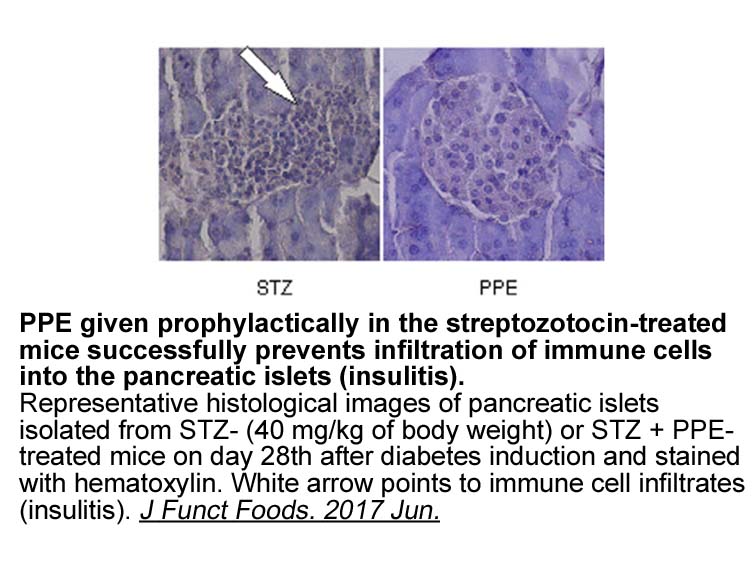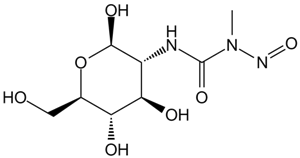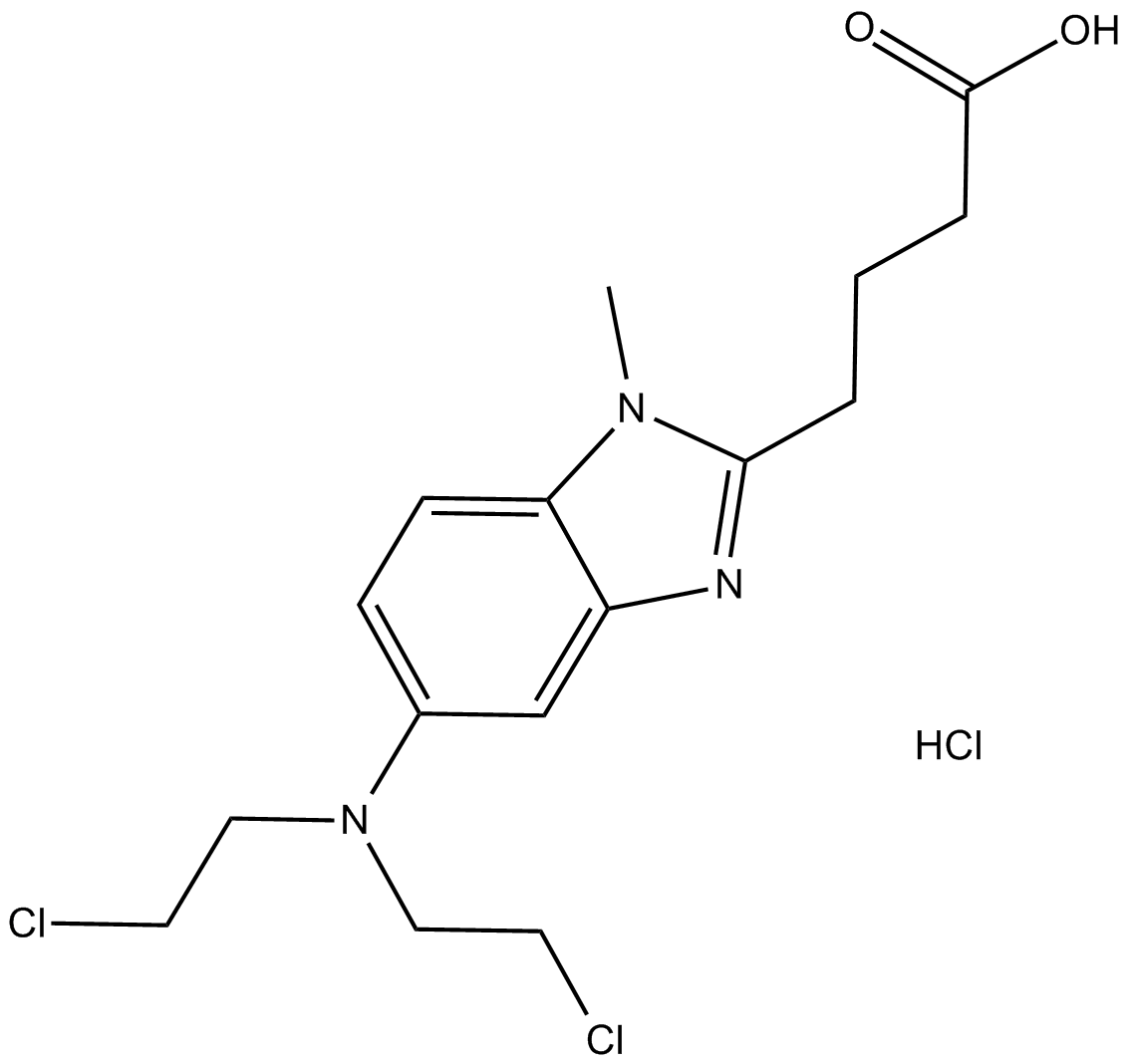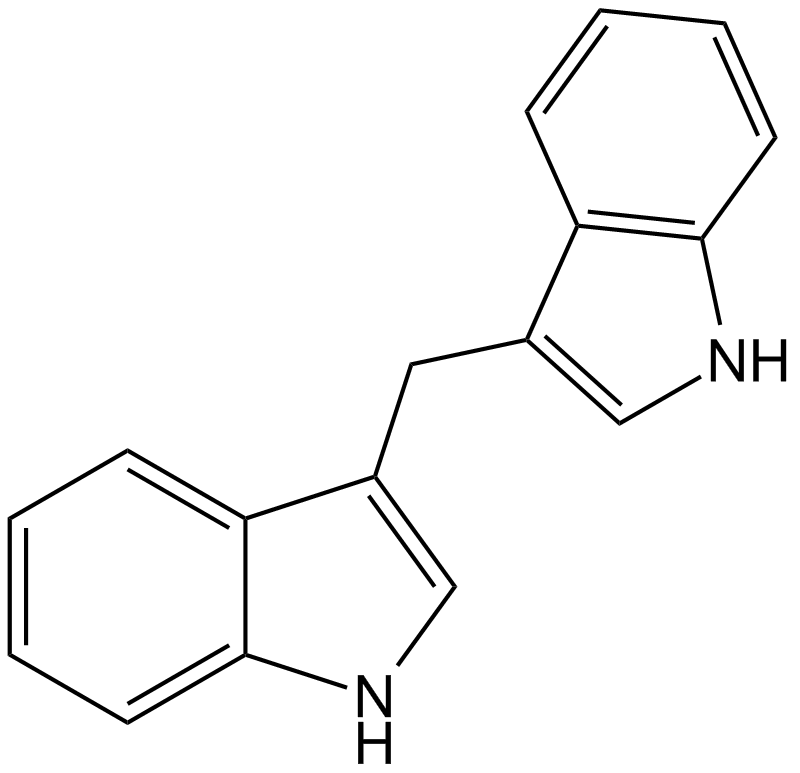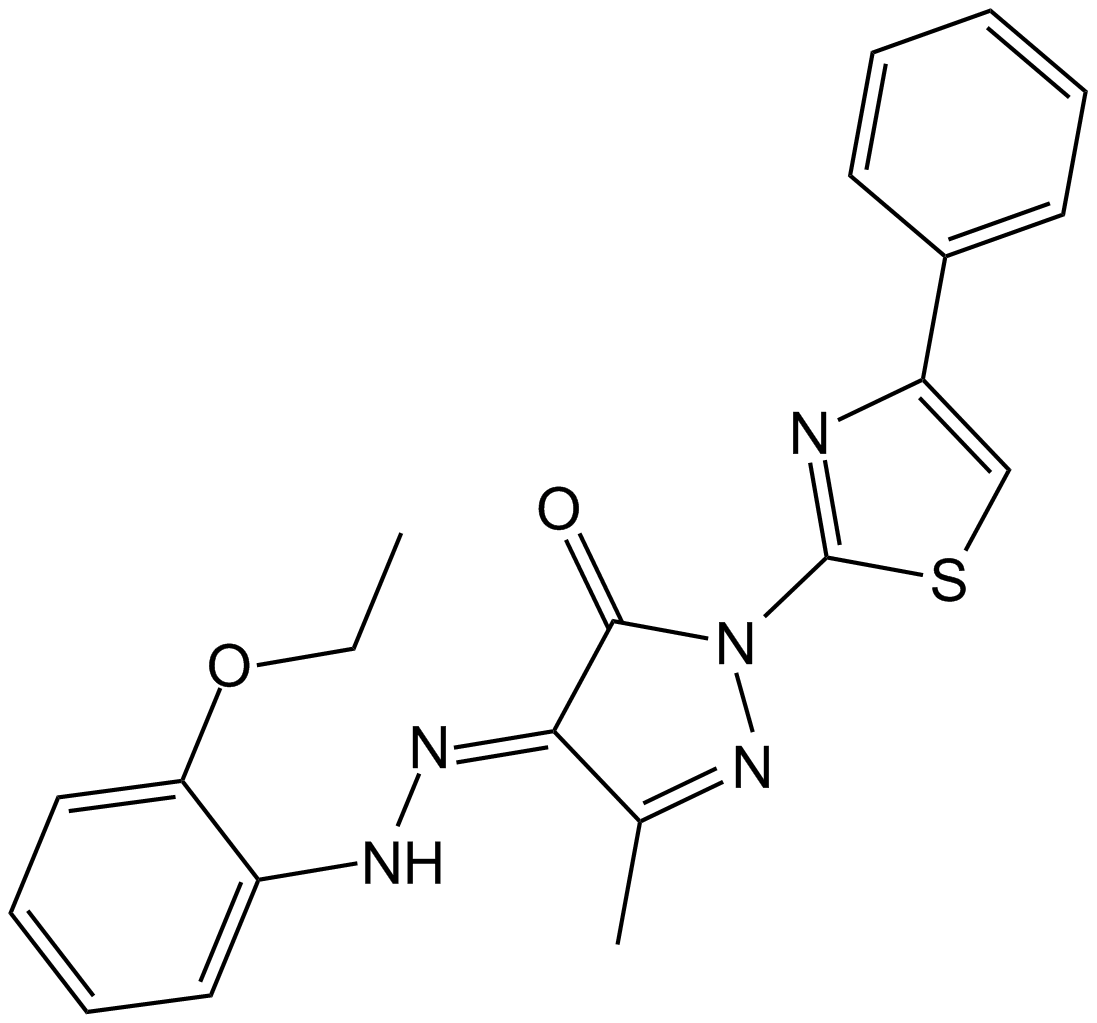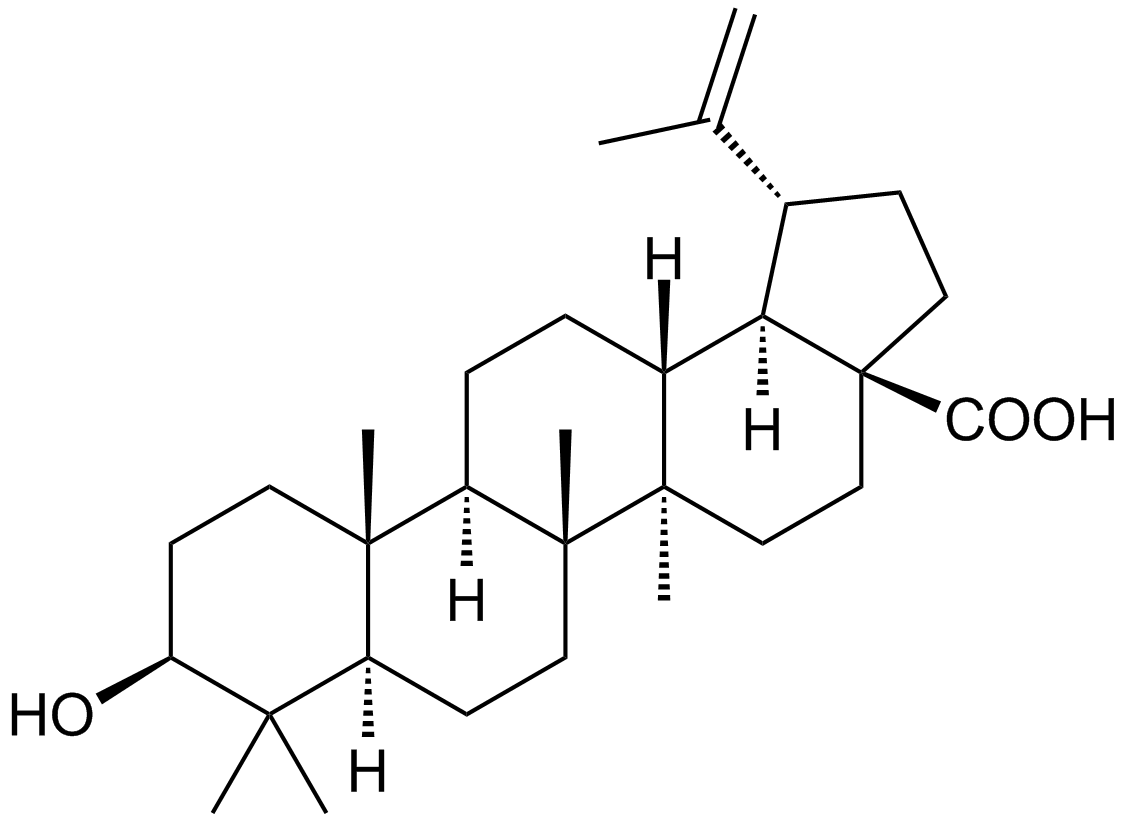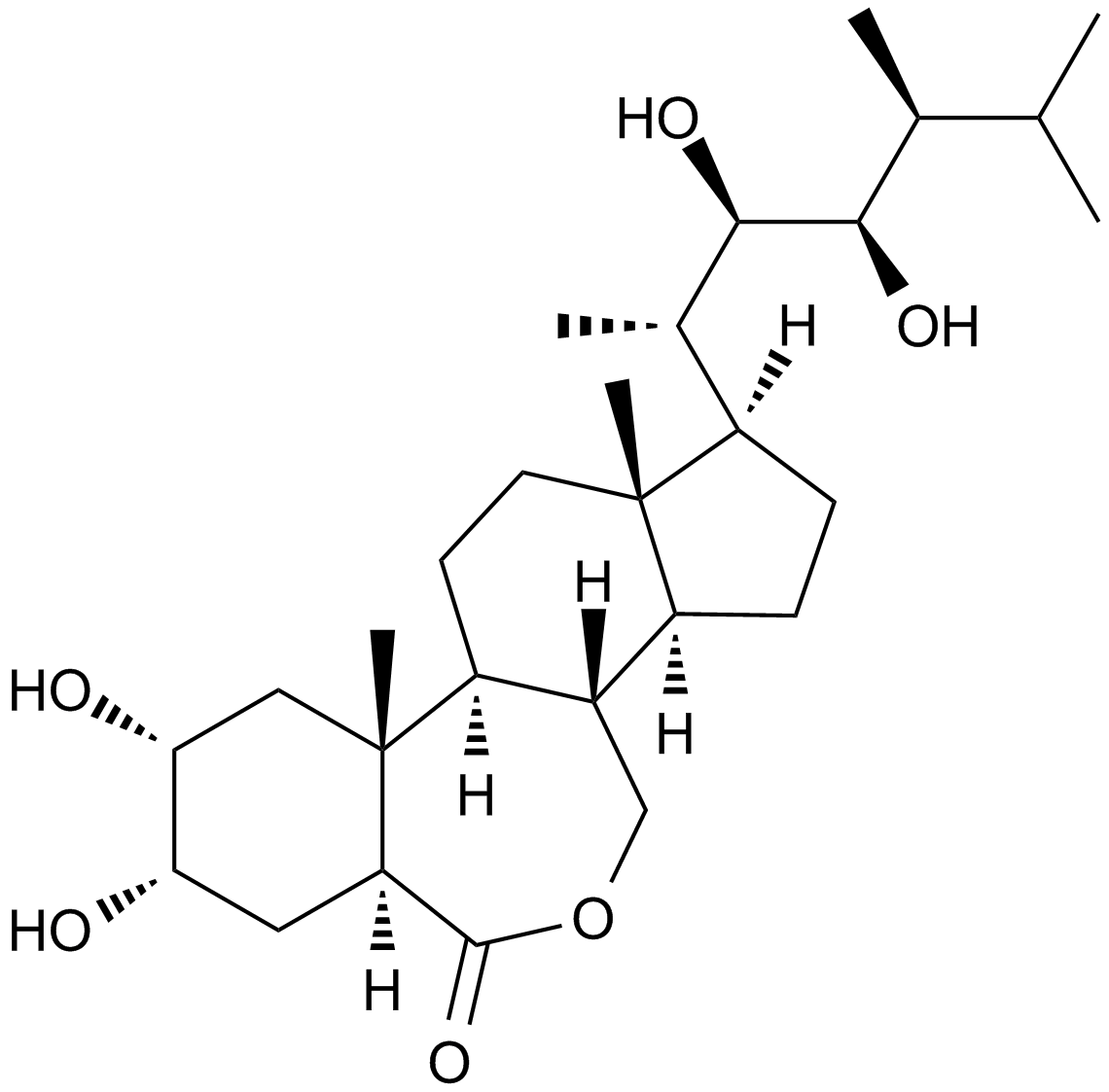Streptozotocin
Streptozotocin (CAS 18883-66-4) is a naturally occurring nitrosourea antibiotic, widely recognized for its utility in biomedical research. Functioning primarily as a DNA-alkylating agent, streptozotocin preferentially targets pancreatic β-cells due to its uptake via the glucose transporter GLUT2, leading to selective cytotoxicity. This mechanism facilitates the induction of β-cell apoptosis by causing DNA damage, resulting in the destruction of insulin-producing cells.
In experimental settings, streptozotocin is used to induce hyperglycemia and diabetes mellitus in various animal models, particularly rodents, through a single or multiple dosing regimen. The cytotoxic effect of streptozotocin on pancreatic β-cells has been quantitatively reported, with specific IC50 values determined in isolated islet cells or relevant pancreatic cell lines. Additionally, streptozotocin exhibits alkylating activity that disrupts cellular metabolism and may influence other tissues expressing the GLUT2 transporter, although its primary action centers on pancreatic islet cells.
In the context of pharmaceutical and biomedical research, streptozotocin is widely employed for the experimental induction of diabetes to study the pathophysiology of the disease and to evaluate novel therapeutic agents aimed at glycemic control, β-cell protection, or diabetes-related complications.
- 1. Jing Gong, Shuangquan Lai, et al. "Multi‐Functional Bio‐HJzyme Engineered Polyetheretherketone Implant with Cascade‐Amplification Therapeutic Capabilities Toward Intractable Implant‐Associated Infections." Small. 2024 Dec 31:e2409437. PMID: 39737662
- 2. Hao Wang, Min Zhou, et al. "2A-biohydrogels accelerate diabetic wound healing by promoting M2 macrophage polarization and functionalized mitochondrial transfer to endothelial cells."
- 3. Hailin Liu, Lian Zhou, et al. "PIEZO1 as a new target for hyperglycemic stress-induced neuropathic injury: The potential therapeutic role of bezafibrate." Biomed Pharmacother. 2024 Jul:176:116837. PMID: 38815290
- 4. Wenyu Dai, Rui Shu, et al. "Engineered Bio-Heterojunction Confers Extra- and Intracellular Bacterial Ferroptosis and Hunger-Triggered Cell Protection for Diabetic Wound Repair." Adv Mater. 2024 Mar;36(9):e2305277. PMID: 37526952
- 5. Ying Deng, Wenyi Zhu, et al. "Exendin-4 promotes bone formation in diabetic states via HDAC1-Wnt/β-catenin axis." Biochem Biophys Res Commun. 2021 Mar 12;544:8-14. PMID: 33516884
- 6. Ivana Stojanovic´, Katarina Šavikin, et al. "Pomegranate peel extract ameliorates autoimmunity in animal models of multiple sclerosis and type 1 diabetes." Journal of Functional Foods 35 (2017) 522–530.
| Physical Appearance | A solid |
| Storage | Store at -20°C |
| M.Wt | 265.22 |
| Cas No. | 18883-66-4 |
| Formula | C8H15N3O7 |
| Synonyms | STZ; NSC-85998; Streptozocin; U 9889 |
| Solubility | ≥10.3 mg/mL in DMSO; ≥26.5 mg/mL in EtOH with gentle warming; ≥53.2 mg/mL in H2O |
| Chemical Name | 1-methyl-1-nitroso-3-[2,4,5-trihydroxy-6-(hydroxymethyl)oxan-3-yl]urea |
| SDF | Download SDF |
| Canonical SMILES | CN(C(N[C@H]([C@H]1O)[C@H](O)O[C@H](CO)[C@H]1O)=O)N=O |
| Shipping Condition | Small Molecules with Blue Ice, Modified Nucleotides with Dry Ice. |
| General tips | We do not recommend long-term storage for the solution, please use it up soon. |
| Cell experiment:[1] | |
|
Cell lines |
A murine pancreatic β cell line, INS-1 |
|
Reaction Conditions |
15 or 30 mM streptozocin for 1 h incubation |
|
Applications |
Higher rates of apoptosis, as compared to necrosis, were observed when cells were exposed to 15 mM streptozocin for 1 h followed by a 24 h recovery period. Higher doses of streptozocin (30 mM) caused the cells to undergo necrosis (22%) as well as apoptosis (17%). Streptozotocin at low doses induced apoptosis and at high doses caused necrosis in INS-1 cells. |
| Animal experiment:[2] | |
|
Animal models |
Male adult Holtzman rats |
|
Dosage form |
50, 65 or 100 mg/kg A single intravenous injection |
|
Applications |
Streptozotocin (65 mg/kg) resulted in rapid degranulation of β cells, accumulation of glycogen in the proximal convoluted tubules of the kidney, as well as development of cataracts in 4 months after streptozotocin treatment. At a higher dose of 100 mg/kg, streptozotocin produced lesions in the exocrine cells of the pancreas, and led to persistence of small, possibly secretory, granules in the Golgi zone of β cells in diabetic rats. Streptozotocin is often used to induce diabetes mellitus in experimental animals. |
|
Note |
The technical data provided above is for reference only. |
|
References: 1. Saini KS, Thompson C, Winterford CM, et al. Streptozotocin at low doses induces apoptosis and at high doses causes necrosis in a murine pancreatic beta cell line, INS-1. Biochemistry and Molecular Biology International, 1996, 39(6): 1229-1236. 2. Arison RN, Ciaccio EI, Glitzer MS, et al. Light and electron microscopy of lesions in rats rendered diabetic with streptozotocin. Diabetes, 1967, 16(1): 51-56. |
|
Quality Control & MSDS
- View current batch:
Chemical structure
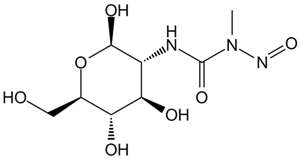
Related Biological Data
